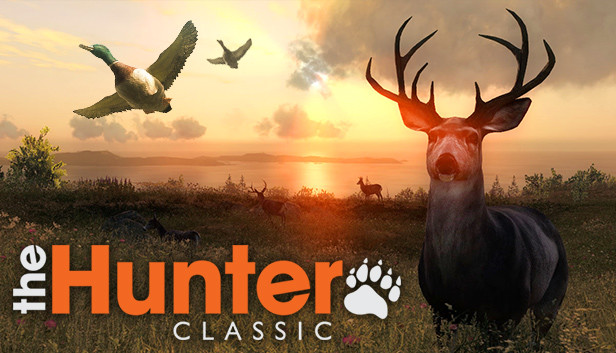An in – depth guide on Mule Deer.
Overview
The mule deer is a deer indigenous to western North America and it is named for its ears, which are large like those of a mule.
The most noticeable differences between mule deer and white-tailed deer are the ear size, the coloration of the tail, and the antlers.
Mule deer possess semi-thin black-tipped tails, unlike the white-tailed deer’s fluffy white tail.
They also are bifurcated, meaning they fork off, unlike white-tailed deer.
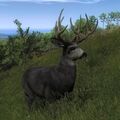 Mule deer are also the larger of the two, with a height of about 3 – 4 feet (0.9 – 1.2 meters) at the shoulder, and reaching up to 7 feet (2.1 meters) from the tail to the tip of the nose.
Mule deer are also the larger of the two, with a height of about 3 – 4 feet (0.9 – 1.2 meters) at the shoulder, and reaching up to 7 feet (2.1 meters) from the tail to the tip of the nose.In addition, there is a mutation related to antler growth which causes them to branch off in unnatural and strange patterns, which is commonly referred to as ‘non-typical’.

Mule deer, unlike white-tailed deer which is found through most of North America, mule deer are only found on the western Great Plains, the Rocky Mountains, the Southwest, and the West Coast of the United States. They have also been introduced to Argentina and Kauai in Hawaii.
In – Game Habitats and Range
- Logger’s Point
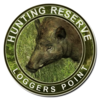
- Timbergold Trails
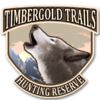
These deer can be found everywhere in Logger’s point, as well as some of the lowland and southern areas of Timbergold Trails.
In Logger’s Point, they appear to spend more time in the woods near water, rather than the hill tops, this is also supported by the fact that beaches act as a natural border that they will walk along or turn back. However, in Timbergold Trails, they are mostly restricted south as due to the rough terrain leading into the mountains. Looking around the hills, riverbanks, low forests and lakes is recommended due to them essentially being restricted to said regions.
Community maps have determined a general area of spawning, although this is not always reliable due to animals spawning an hour earlier to lay tracks.
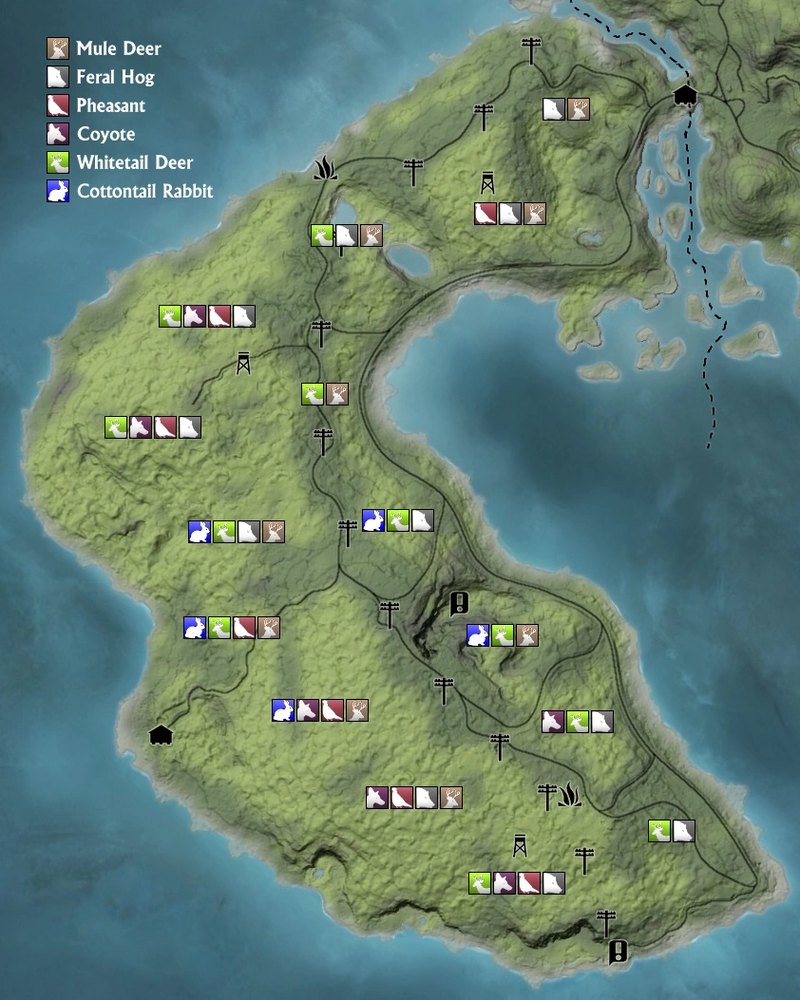
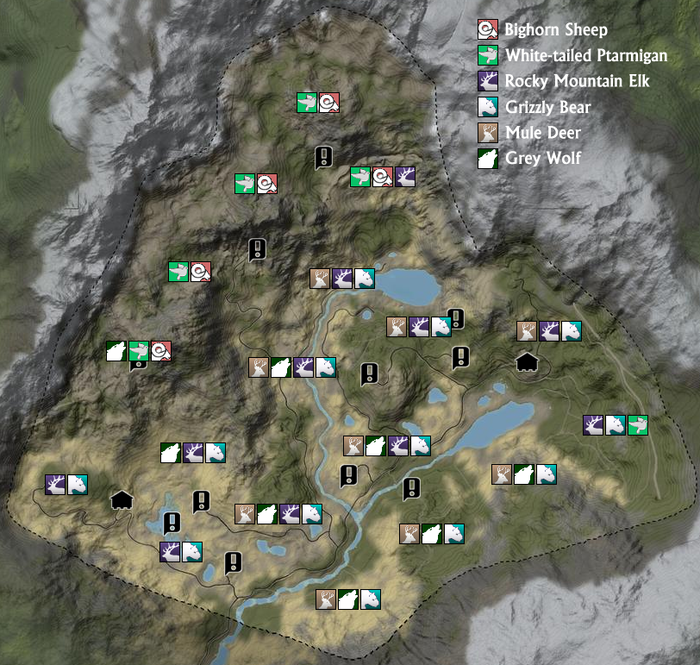
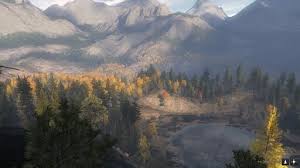
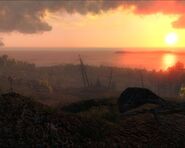
Credit to NarTeKK for the Timbergold Trails image.
Equipment Pt. 1
There are two main attractants for Mule deer.
- Urine Spray
- Callers
Urine spray appears as a spray bottle, which you can equip and spray around your specified hunting areas to gradually attract nearby Mule deer.
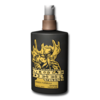
Callers work with left click, and produce a sound ment to mimic either a doe with the bleat, or a buck with the grunt caller.
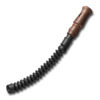
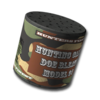
The usage of these callers emits a radius of about 100 meters (328.084 feet), over a period of time.
Note that these effects do not stack, and only reset the time left to attract animals.
‘Defensive’ Equipment
What I call ‘defensive’ equipment is really just items ment to give you an edge over the adept senses of Mule deer.
There are scent – eliminators, wind powder, and camouflage.
Scent eliminators work by masking the player’s scent from the deer, which can smell several times better than bloodhounds. These last for 30 minutes.
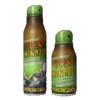 Next, there is wind powder.
Next, there is wind powder.
This is not dissimilar in appearance to scent eliminator, but they do not do the same thing.
Instead of masking your scent, they detect the direction of wind travel so you can move upwind of animals.
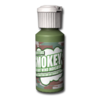
Camouflage
Camouflage is specially made articles of clothing ment to make visual detection exceedingly difficult.
Mule deer inhabit 2 reserves, one summer with forests and fields, and one autumn with mostly forests.
There is Boone & Crockett Camouflage, Sneaky 3D Summer Forest Camouflage, Sneaky 3D Summer Field Camouflage, and Sneaky 3D Fall Forest Camouflage.
Boone & Crockett Camouflage: S3D Summer Forest Camouflage: S3D Fall Forest Camouflage:
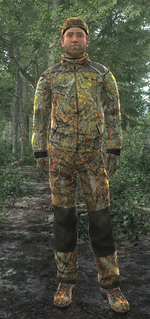
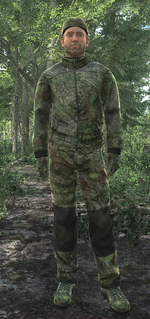
Camouflage gives an ‘excellent’ rating on visual coverage when in the right region and landtype.
This will help greatly, especially in exploitation of their slightly weak eyesight.
Other coverage includes face paint, which adds an extra element of coverage.
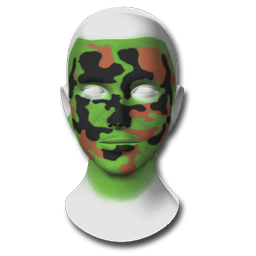
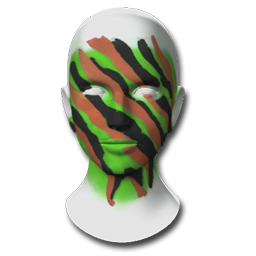
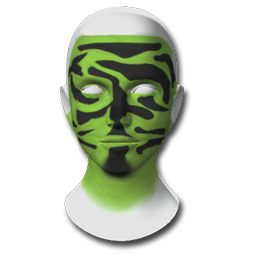
Equipment Pt. 2
Optics
In the open fields and hilltops of both Logger’s Point and Timbergold Trails, the 30×65 spotting scope is ideal because of how powerful it is.
Use these to glass over very large areas and spot herds, or areas where they might be.
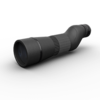
However, in the big forested areas of both reserves, the 7x42mm Rangefinder – Binoculars is a fine option as it possesses the great distance a pair of binoculars can cover, with the distance finding abilities of the rangefinder.
A good option for for bowhunters, especially the ones using classical bows.
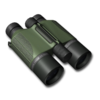
Large Equipment
A good starter would be the ground blind, as you can put it up near travel lanes to wait for deer to pass by. Other uses could be combining it with urine spray to attract them even longer, and pick them off as they enter into range. It is recommended to use ground blinds with callers, urine spray, and scent eliminator for maximum effectiveness.
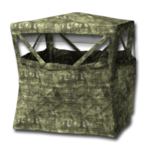
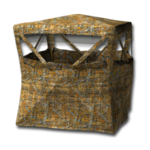
Another fine piece of equipment would be the hunting tower. These can be used to great success in calling in multiple animals and picking them off as they come in, due to you basically becoming invisible to the animals as they would be more focused on where that other deer is than the large ‘tree’ at the edge of the field. Use in combination with scent eliminator, urine spray, and callers.

Finally, the shooting tripod rest would be a very nice option for shooting deer over great distances.
They remove 7 levels worth of shakiness when using, and if you have maxed out your weapon skill, it adds on while using it.
No more wiggle jiggle! This sturdy, rock-steady unit delivers dead-on shot precision for your firearms. Portable and lightweight, this tripod is ideal for hunting in the open field. Height adjustable, it works just as well from crouching position.

Firearms & Bows
For ease of reading, I will divide it into 2 sections, with four types for firearms.
Firearms
There are 4 types that I will cover.
- Handguns
- Rifles
- Shotguns
- Muzzleloaders
Handguns
A handgun is a short-barrelled firearm that can be held and used with one hand.
A great choice for the tougher mule deer would be the 44. Nosler Sporting Revolver.
You can choose the Nosler or Magnum, both are the same besides design.
These can also be fitted with a variety of scopes, making long – range shooting possible with good shot placement.


Rifles
A rifle is a long-barrelled firearm designed for accurate shooting, with a barrel that has a helical pattern of grooves (“rifling”) cut into the bore wall.
I recommend the .30-06 Lever Action Rifle. It has slightly low penetration, but it makes up for that in wounding power, making, and quoting from the rifle’s in-game description, ‘making those not-quite-perfect shots fatal in most situations’.
This rifle has a fast reload, allowing quick second, possibly third, or maybe even fourth follow-up shots. It is also very popular with deer hunters, allowing them to take 2 or 3 animals before they disappear into the forest.
In addition to this, the .30-06 rifle can be fitted with a scope for accurate shooting.
Shoot wisely though, the .30-06 is LOUD!


My next rifle would be the 7mm Magnum Bullpup Bolt – Action rifle.
While not as fast as the .30-06, it is very powerful, and is still quick.
On top of that, it can be fitted with a powerful scope, as well as a quick reload.


Shotguns
A shotgun (also known as a scattergun or historically as a fowling piece) is a long-barreled firearm designed to shoot a straight-walled cartridge known as a shotshell, which usually discharges numerous small pellet-like spherical sub-projectiles called shots, or sometimes a single solid projectile called a slug. Shotguns are most commonly smoothbore firearms, meaning that their gun barrels have no rifling on the inner wall, but rifled barrels for shooting slugs (slug barrels) are also available, however slug guns are not available in – game.
My first recommendation would be the Maisto 12 Gauge Shotgun.
It is very powerful within 60 meters, accurate with a slug scope, and very fast firing.
Picking off multiple bucks can be possible if you are quick.



My second suggestion is the 12 Gauge Blaser F3. While powerful, it is unmatched in speed allowing you to possibly take two bucks before they even realized what happened.
Using this with a ground blind or treestand can result in great success as it allows you to get very close, and thus lower your chances of missing.
Muzzleloaders
A muzzleloader is any firearm into which the projectile and usually the propellant charge is loaded from the muzzle of the gun (i.e., from the forward, open end of the gun’s barrel).
In practical terms, I do not recommend a muzzleloader due to it’s incredibly slow nature, but if you are looking for an authentic experience and the thrill of hunting with a blackpowder weapon, I encourage you to do so.
Bows
The bow and arrow is a ranged weapon system consisting of an elastic launching device (bow) and long-shafted projectiles (arrows). There are currently many to choose from, ranging from modern compound bows to simplistic classical stick – and – string ones.
My first bow would be the Pulsar Compound Bow, it is very quiet, but at the same time comparable to the Snakebite in power, and of all bows, it is the most stable, so it is an ideal choice for picking off herds.




My second recommendation is the Parker Python Compound Bow.
It is extremely silent, but less powerful, so place your shots well.
With good aim, taking down herds shouldn’t be too much of a problem.

Hunting the Animal
When hunting Mule deer, make sure to only claim males as the does are not worth anything, only exceptions being a rare fur variation. When starting, your location does not matter much, as they are everywhere in Logger’s Point.
However, in Timbergold Trails start at either lodge and consider moving down in elevation, and near water and the low forests.
As said previously, moving along the beaches in Logger’s Point is a good idea as they act as a natural border and deer with move alongside the water naturally.
Always a good starting point is the Border Lodge. Start early in the morning (5-6 AM), and move on from there.
You will most likely encounter a high percentage of Mule deer.
When judging a buck’s score, look for large antlers with many long points moving upwards.
You may be tempted to shoot the first buck you see, but do not. Wait for the entire herd to group up, especially if it’s a male – only, as in those groups there is often one very nice rack.
Should there be two good racks, develop your strategy including a fast weapon or silent one, such as a bow.
Also remember to spot every Mule deer you see, as it will build up your spotting score and thus allow more accurate scoring, so you get the best buck.
A good scoring buck should look something like this:
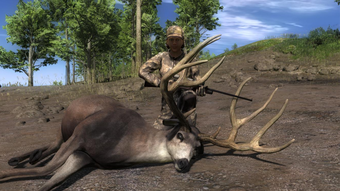
Tracking
As with White-tailed deer, weight does somewhat correspond with the score.
Look for tracks from heavy bucks, 6-7 is very nice and is often worth the session.
However, a medium – sized buck is also considered the trouble, as they can boast a much larger rack and thus a higher score.
If you have seen a trophy – grade buck, and cannot find any more tracks, do not be discouraged.
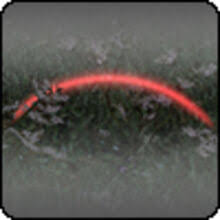 These bucks are more aware due to their size, age, and thus ‘experience’. That’s just telling you that they’re worth it. Glass the area to make sure you didn’t miss anything.
These bucks are more aware due to their size, age, and thus ‘experience’. That’s just telling you that they’re worth it. Glass the area to make sure you didn’t miss anything.
Keep running around, although it is likely you will spook it again you at least will have more tracks.
Spooked mule deer do not run very far, with the exception of high scoring animals.
They will be alert while nervous, however, but that does not make them impossible to hunt, just more difficult.
Stand Hunting
Stand Hunting involves staying in one place, or small area, and using any of the equipment mentioned in Equipment Pt. 2, or simply sitting still.
Using Mule deer urine spray around you area could be very useful, especially if it gets uninteresting just waiting. Stand Hunting also works very well with bows.
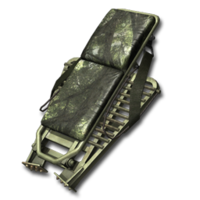 When you bring in a herd, pick them off with a bow as they come, or be prepared with a quick weapon like the .30-06 Lever Action Rifle, or the Maisto 12 Gauge Semi – Automatic Shotgun.
When you bring in a herd, pick them off with a bow as they come, or be prepared with a quick weapon like the .30-06 Lever Action Rifle, or the Maisto 12 Gauge Semi – Automatic Shotgun.
Driving
Driving is a rather difficult task for one person only, as it is composed of crossing the entire reserve while shooting to spook animals towards the border, which they will not cross. This takes a great amount of ammo, so bringing in fellow hunters is greatly encouraged.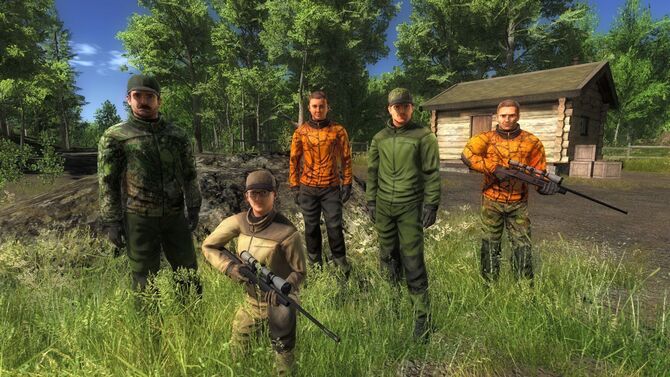 When you do this, do not shoot too often as to preserve ammo, but do not go so slow as to give the deer the time to return to roaming. Once you reach the border or see the animals running in incoherent patterns, you should then be able to shoot.
When you do this, do not shoot too often as to preserve ammo, but do not go so slow as to give the deer the time to return to roaming. Once you reach the border or see the animals running in incoherent patterns, you should then be able to shoot.
Shooting
When shooting the mule deer, make sure you have a permitted weapon.
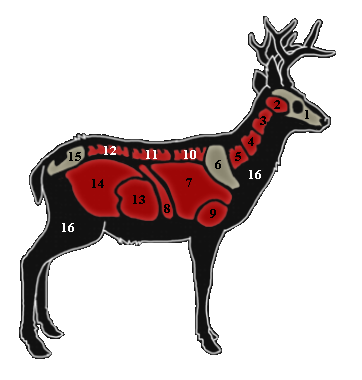 1 = Skull
1 = Skull
2 = Brain
3 = Neck bone 1
4 = Neck bone 2
5 = Neck bone 3
6 = Shoulder bone
7 = Lungs
8 = Liver
9 = Heart
10 = Spine bone 1
11 = Spine bone 2
12 = Spine bone 3
13 = Stomach
14 = Intestines
15 = Hip bone
16 = Body

